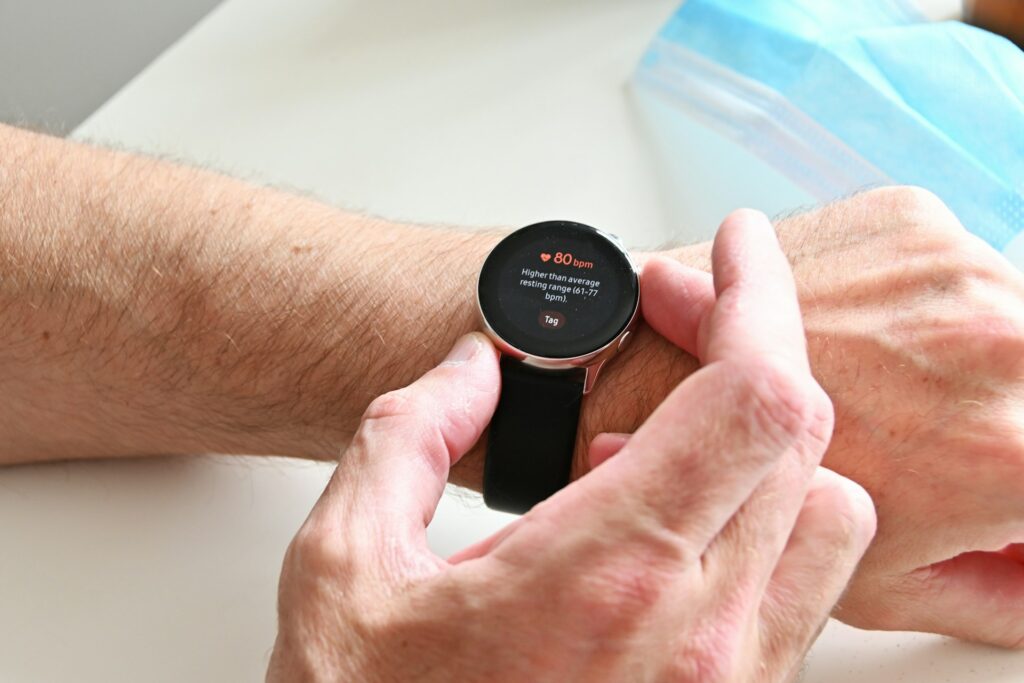Imagine being a young single mother with a special needs child who requires constant care and attention. You’re struggling to make ends meet and have no support system to rely on. The last thing on your mind is your own health and well-being.
For many individuals in the United States, healthcare is often complicated, fragmented, and challenging to navigate. So how do we genuinely make healthier communities one patient at a time?
What if healthcare providers could use personalized education to help you improve your family’s health? What if they could gather patient health data and other information to create personalized healthcare outreach and community health programs that are more likely to succeed?

The need for personalized education in healthcare
Personalized education can be a game-changer in a world where healthcare costs rise, and many communities struggle with poor health outcomes. Rather than providing a one-size-fits-all approach to healthcare and education, personalized education considers everyone’s unique needs, preferences, and circumstances. By doing so, healthcare providers can create more effective outreach and community health programs tailored to each community member’s needs.
Remember imagining ourselves as the single mother mentioned earlier? Personalized education could mean receiving healthcare and education materials tailored to her specific situation.
For example, if she struggles to provide healthy meals for her child, she could receive educational materials on healthy eating designed for families on a tight budget. If she is experiencing stress and burnout from caring for her child, she could receive educational materials on self-care and stress reduction techniques.
The importance of personalized healthcare outreach programs
Personalized healthcare outreach programs are designed to meet the unique needs of patients and their communities. This approach to healthcare can help improve:
- patient outcomes
- reduce risk factors
- lower healthcare costs
The Centers for Disease Control and Prevention (CDC) has said personalized healthcare outreach programs can help prevent and manage chronic conditions like diabetes, heart disease, and cancer. These programs use a data-driven approach to identify patients’ health needs, provide targeted interventions, and track outcomes to ensure success.
Now, let’s dive deeper into the story of the young single mother with a special needs child. This mother has been struggling to manage her child’s condition without any support, and she has been missing appointments and struggling to navigate the healthcare system. However, with the help of a personalized healthcare outreach program, she can receive targeted interventions that meet her unique needs. The program can help her access resources such as transportation, childcare, and emotional support to improve her child’s health outcomes and reduce her stress levels. Imagine the impact on this family’s life.
Personalized healthcare outreach programs can also improve community health by targeting populations at higher risk for certain health conditions. For example, a program can target individuals who live in food deserts and lack access to healthy foods. By providing education and resources on healthy eating, these individuals can improve their health outcomes and reduce their risk for chronic conditions such as diabetes and heart disease.
Another example is targeting populations with high rates of smoking or substance use. By providing education and resources on smoking cessation or substance use disorder treatment, these populations can improve their health outcomes and reduce their risk for associated health conditions.
Want to understand what changes will have the greatest community impact?
Start with deeper insights into their experiences.
Gathering patient health data to educate
To create personalized education programs, healthcare providers need to gather patient health data and other information. This data can include information about a patient’s medical history, lifestyle factors (such as diet and exercise habits), socioeconomic status, and other factors impacting health outcomes.
Consider the example of the single mother. Healthcare providers could gather data on her child’s medical history, the types of care and support the child requires, and the mother’s health history and current health status. They could also gather information on the mother’s lifestyle factors, such as her diet, exercise habits, and stress levels.
With this information, healthcare providers could create a personalized healthcare and education plan that takes into account the mother’s unique circumstances. For example, if the mother has a history of depression, healthcare providers could include educational materials on managing depression and provide referrals to mental health services. If the mother has limited access to transportation, healthcare providers could help her find resources for accessing healthcare and healthy food options in her area.
Personalization, when used correctly, is all about efficiency and targeted are that make sense. Its philosophy pulls heavily on a patient-first methodology in providing services and care.

The role of data in personalized healthcare outreach program
Data plays a critical role in creating successful personalized healthcare outreach programs. By gathering patient health data and other information, healthcare providers can better understand patients’ unique needs and develop targeted interventions.
Data can include a patient’s medical history, family history, lifestyle habits, and social determinants of health, such as access to transportation or housing conditions.
Let’s consider the story of the young single mother with a special needs child. By gathering data on her child’s condition, medical history, and social determinants of health, healthcare providers can identify her challenges and develop targeted interventions to improve her child’s health outcomes. They can connect her with resources, such as social services or community support groups, to help her manage her child’s condition and reduce her stress levels. Over time, healthcare providers can track their child’s progress and adjust interventions as needed to ensure success.
You’re looking at the overall evolution of care.
As mentioned earlier, data can also be used to identify populations at higher risk for certain health conditions. Healthcare providers can use data on demographics, health behaviors, and health outcomes to identify populations with high smoking or substance use rates. They can then develop targeted interventions to reduce smoking or substance use in these populations and track outcomes to ensure success.
The benefits of personalized education
The benefits of personalized education are varied, but they can start with improvement in areas like:
- Health and patient outcomes
- Risk management and lower risk factors
- Patient satisfaction
Personalized education can have many benefits for individuals and communities. We’ve seen how professional development works for employees, but there is a lot to say for educating your patients, too! For one, it can lead to improved health outcomes. When healthcare providers can tailor their outreach and education programs to the specific needs of each individual, they are more likely to achieve positive health outcomes. This can result in lower healthcare costs over time, as individuals are less likely to require costly medical interventions.
By targeting education and outreach programs to specific risk factors, such as poor diet or lack of exercise, healthcare providers can help individuals and communities improve their overall health. This can lead to a decrease in chronic diseases and other health problems, which can, in turn, lead to lower healthcare costs.
When individuals feel that their healthcare and education needs are being met in a personalized way, they are more likely to feel satisfied with their care. This can lead to better patient outcomes, as individuals are more likely to follow through with healthcare recommendations and participate in community health programs. This all leads to improving patient satisfaction.
Personalized education has the potential to revolutionize healthcare outreach and education programs. By gathering patient health data and other information, healthcare providers can create tailored healthcare and education plans that meet the unique needs of each individual.
The benefits of personalized healthcare outreach programs
The benefits of personalized healthcare outreach programs can have lasting positive effects on the community and can help:
- Promote effective care coordination
- Reduce healthcare disparities
- Promote health equity
- Improved patient outcomes
- Improved patient engagement
- Promote healthcare equity
Personalized healthcare outreach programs offer many benefits to patients, healthcare providers, and communities.
For patients: these programs can improve patients’ health outcomes, reduce their risk factors for chronic conditions, and provide them with the resources they need to manage their conditions effectively.
For healthcare providers: these programs can improve patient satisfaction, reduce healthcare costs, and promote more effective care coordination.
For communities: these programs can improve overall health levels, reduce healthcare disparities, and promote health equity for communities.
One significant benefit of personalized healthcare outreach programs is that they can reduce healthcare costs by preventing or managing chronic conditions.
90% of US healthcare spending is on chronic conditions. Personalized healthcare can reduce costs for… Click To TweetWant to reduce healthcare costs? You can do that by promoting preventive care, reducing unnecessary hospitalizations and emergency department visits, and promoting more effective care coordination.
They also can improve patient outcomes by promoting patient engagement and education. When patients are engaged in their care and understand their conditions, they are more likely to follow their treatment plans, manage their conditions effectively, and achieve better health outcomes. Personalized healthcare outreach programs can give patients the education and resources they need to manage their conditions effectively and achieve better health outcomes.
Targeting populations at higher risk for certain health conditions and reducing healthcare disparities can help tackle the difficult challenge of health equity. By providing targeted interventions to populations that may face barriers to accessing healthcare, such as low-income individuals or individuals living in rural areas, healthcare providers can promote health equity and reduce healthcare disparities.
Of course, the idea of a young mother struggling to survive and keep her children safe and healthy isn’t new in the world, and it’s all too common when it shouldn’t be. Personalization can do more than take a customer from the home page to the cart on a retail website (not that anything is wrong with that!).
It can save lives.
It can change outlooks.
It can even provide hope.
Now is the best time to get feedback from your community with powerful analytics to drive action. Don’t know where to start? Connect with us to learn how we can support your efforts!














